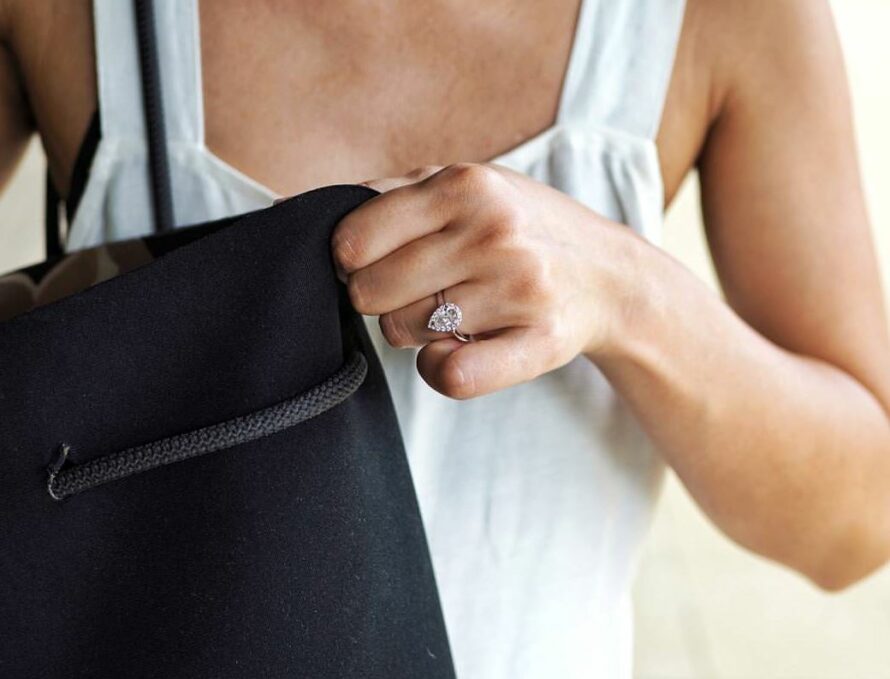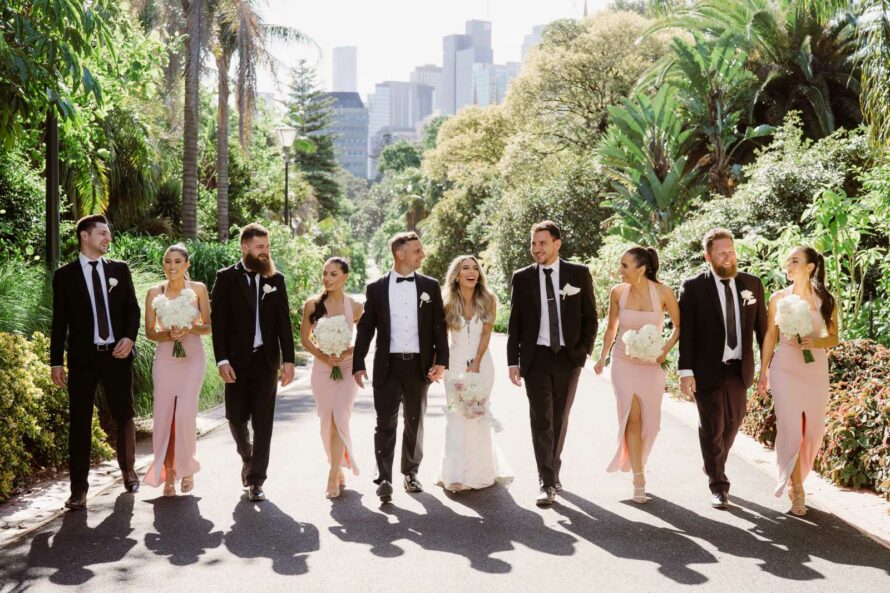Veils. You either love ’em or you hate ’em, but after a certain Ms Middleton walked down the aisle at Westminster Abbey in April 2011, more brides-to-be are suddenly loving them!
Australian gown designer Karen Willis Holmes says she has always considered veils a timeless and classic addition to a wedding dress.
She considers them the the perfect accessory to any gown, but cautions that the first consideration should be the the detailing and style of your dress.
“The veil should compliment and be proportional to the dress, not compete with it,’ says Karen.
“As a rule, the slimmer the gown, the longer the veil. For example, a slinky figure-hugging wedding dress looks fabulous with a long, chapel length veil as it complements the line of the silhouette.”
For an A-line silhouette wedding dress, Karen suggests a cathedral length veil for a floaty, dreamy look. However, most common veil for an A-line gown is a fingertip length veil, as it balances the proportions of the gowns silhouette.
As the name suggests this veil is long enough to reach the fingertips and suits vintage-inspired look. For a ball gown style with fitted bodice, the best look is a shorter veil, around waist length. A full-length veil may get lost in the full style of the skirt.
One-tiered veils provide a subtle look of elegance. A two-tiered veil is suitable for nearly all dresses and is a more traditional option as the shoulder length layer can be worn over the face. This veil looks especially nice with fuller ballroom gowns. Choose a blunt edge or rolled edge veil for a classic look and finish to your veil.
Lace trimmed veils can look great with all over lace dresses – because they carry the theme or pair with a simple dress and make the lace trim of the veil the feature.
Fascinators and Birdcage veils are great for those brides wanting to put their own personal twist on their bridal look. Simpler gowns work best with these as you can play with the detail or your fascinator – and make it a focal point of your look.
Karen says another consideration should be your hairstyle on the day and, in particularly, where the veil’s comb will sit in your hair.
The most popular position is at the back of the head either below or above a chignon style. Alternatively, wear your hair down and position the comb at the top back of your hairline for a relaxed look.
“To look after your veil before and after your big day the most important thing is not to iron it,” says Karen. “If you do unpack it and there are a few creases instead take it into the bathroom, hang it on the door and the steam from your shower will release the creases.”
After your day you can either have your veil stored properly with your gown by a dry cleaner or you can fold it between blue acid-free tissue paper. This will protect the veil from discolouring during storage.
“You will only be a bride for a single day,” says Karen “and nothing says bride more than a veil, so now that you have the dress have fun when choosing your accessories, hairstyle, makeup and your veil. And just remember to be yourself!”



